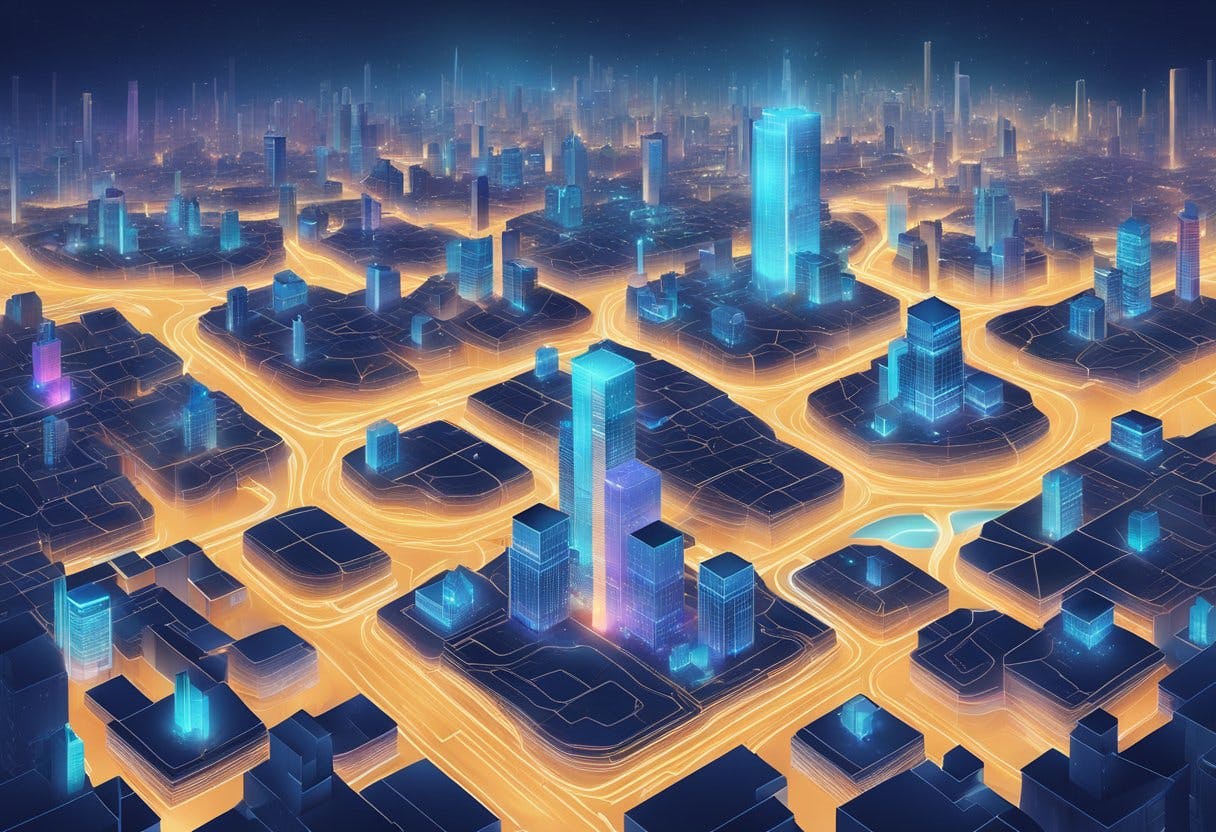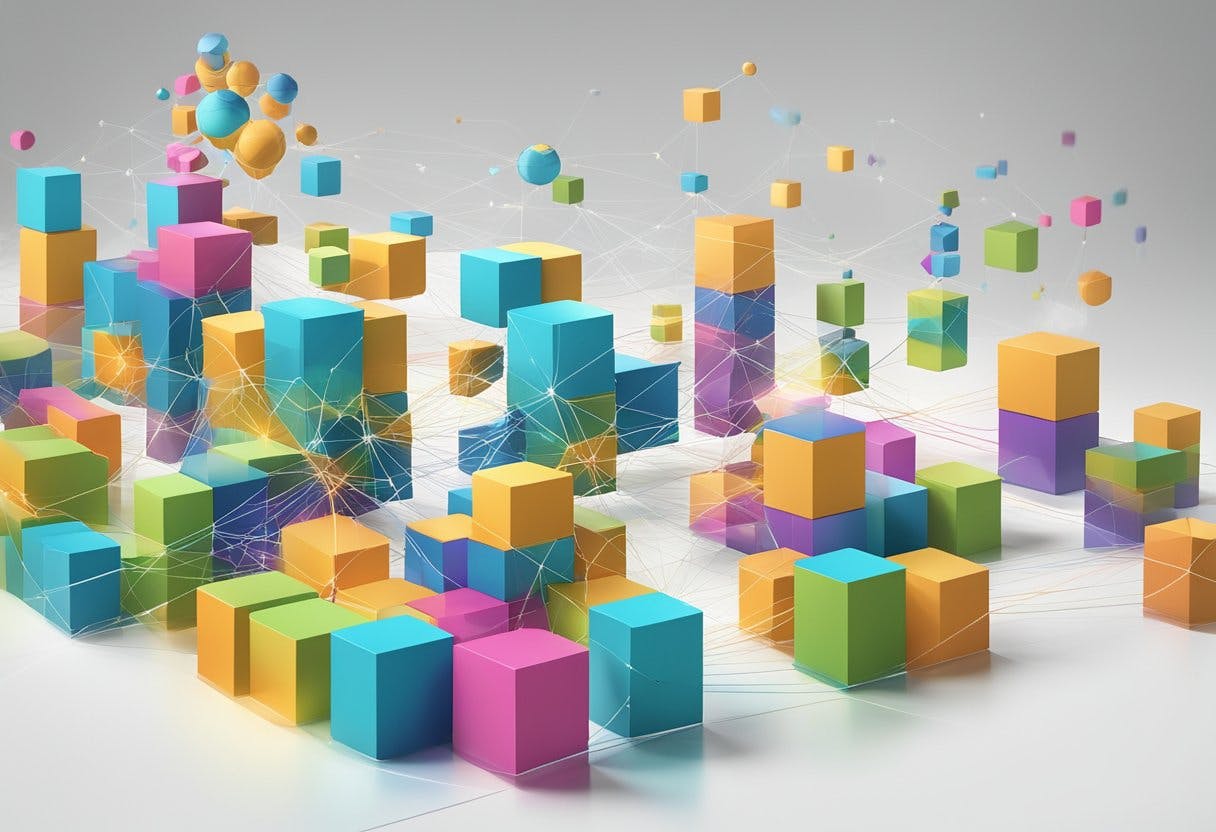
Layer 2 scaling solutions have emerged as a promising solution to address the scalability challenges faced by blockchain networks. The limitations of blockchain networks such as Bitcoin and Ethereum are well-known, with low transaction throughput and high fees being major issues. Layer 2 solutions aim to address these limitations by enabling off-chain transactions, reducing congestion on the main blockchain, and improving the user experience.

Understanding Layer 2 Solutions requires a basic understanding of blockchain technology. Layer 1 refers to the main blockchain network, while Layer 2 refers to a network that sits on top of the main blockchain. Layer 2 solutions are designed to process transactions off the mainnet, thereby reducing congestion and improving the scalability of the network. The two main types of Layer 2 scaling solutions are state channels and sidechains. State channels enable users to conduct off-chain transactions without requiring them to be broadcast to the main blockchain, while sidechains allow for interoperability between different blockchain networks.
Key Takeaways
- Layer 2 scaling solutions aim to address the scalability challenges faced by blockchain networks.
- State channels and sidechains are the two main types of Layer 2 scaling solutions.
- Layer 2 solutions enable off-chain transactions, reducing congestion on the main blockchain and improving the scalability of the network.
Understanding Layer 2 Solutions

Defining Layer 1 and Layer 2
In blockchain technology, Layer 1 refers to the underlying blockchain network, which is responsible for maintaining the integrity of the ledger and validating transactions. Layer 1 blockchains, such as Bitcoin and Ethereum, have a limited capacity for processing transactions per second, which can result in slow transaction times and high fees during periods of high network activity.
Layer 2 solutions, on the other hand, are protocols designed to improve the scalability, speed, and efficiency of blockchain networks by offloading some of the transaction processing from Layer 1 to an off-chain network. Layer 2 solutions are built on top of Layer 1 and are designed to complement and enhance the capabilities of Layer 1.
The Role of Layer 2 in Blockchain Scalability
Layer 2 solutions, such as state channels and sidechains, offer a near-instantaneous response, meaning transactions on these networks are processed and confirmed almost instantly. This feature significantly enhances user experience. Layer 2 scaling solutions come in different shapes and sizes, each addressing the scalability problem uniquely. Layer 2 solutions offer a practical way to manage smaller crypto value transactions, without compromising a parent chain’s underlying security.
Layer 2 solutions have become increasingly popular as blockchain technology has gained more widespread adoption. By offloading some of the transaction processing from Layer 1 to an off-chain network, Layer 2 solutions can significantly increase the number of transactions per second that a blockchain network can process. This, in turn, can help to improve the scalability, speed, and efficiency of blockchain networks, making them more practical for use in a wide range of applications.
Types of Layer 2 Scaling Solutions

Layer 2 scaling solutions are designed to enhance the scalability and reduce transaction costs associated with Layer 1 blockchain networks. There are several types of Layer 2 scaling solutions, including rollups, state channels, payment channels, sidechains, and plasma chains. Each of these solutions has its own unique characteristics and benefits.
Rollups and Their Variants
Rollups are one of the most popular Layer 2 scaling solutions. They work by bundling multiple transactions into a single transaction, which is then submitted to the main blockchain. This process helps to reduce the load on the main blockchain and increase transaction throughput. There are two main types of rollups: optimistic rollups and zk-rollups.
Optimistic rollups are a type of rollup that uses fraud proofs to ensure the security of the transactions. They assume that all transactions are valid unless proven otherwise. If a fraudulent transaction is detected, a fraud proof is submitted to the main blockchain to dispute it.
Zk-rollups, on the other hand, use zero-knowledge proofs to ensure the security of the transactions. They provide a higher level of security than optimistic rollups but are more complex and expensive to implement.
State Channels and Payment Channels
State channels and payment channels are another type of Layer 2 scaling solution. They work by allowing users to conduct multiple transactions off-chain before submitting the final state to the main blockchain. This process helps to reduce the load on the main blockchain and increase transaction throughput.
State channels are used for more complex transactions, such as gaming or prediction markets, while payment channels are used for simple transactions, such as micropayments. Both types of channels can be closed at any time, and the final state is submitted to the main blockchain.
Sidechains and Plasma Chains
Sidechains and plasma chains are a type of Layer 2 scaling solution that works by creating a separate blockchain network that is connected to the main blockchain. This process helps to reduce the load on the main blockchain and increase transaction throughput.
Sidechains are independent blockchain networks that can be customized to meet specific needs. They are connected to the main blockchain through a two-way peg, which allows users to move assets between the two chains.
Plasma chains, on the other hand, are a type of sidechain that uses a hierarchical structure to increase scalability. They work by creating child chains that are connected to the main chain. This process helps to reduce the load on the main chain and increase transaction throughput.
In conclusion, Layer 2 scaling solutions are an essential part of the blockchain ecosystem. They help to increase transaction throughput, reduce transaction costs, and improve the overall scalability of blockchain networks. By understanding the different types of Layer 2 scaling solutions, users can choose the one that best suits their needs and preferences.
Evaluating the Impact on User Experience

Layer 2 solutions are designed to enhance the user experience by improving transaction speeds, reducing transaction costs, and ensuring the security and decentralization of blockchain networks.
Transaction Speed and Costs
One of the primary benefits of Layer 2 solutions is the significant increase in transaction speeds. By moving certain processes or transactions off-chain, Layer 2 solutions can alleviate congestion on the main blockchain, allowing for faster and more efficient transactions. This results in a smoother user experience, with transactions that are completed in a matter of seconds or minutes instead of hours or days.
In addition to faster transaction speeds, Layer 2 solutions also help reduce transaction costs. The use of off-chain networks allows for lower gas fees, which can be a significant expense for users of blockchain networks. Lower transaction costs make blockchain technology more accessible to a wider audience, leading to increased adoption and usage.
Security and Decentralization Trade-offs
While Layer 2 solutions can improve the user experience by increasing transaction speeds and reducing transaction costs, there are trade-offs to consider. One of the primary concerns is the potential impact on the security and decentralization of blockchain networks.
By moving transactions off-chain, Layer 2 solutions introduce a level of centralization that can be a cause for concern. However, it is important to note that many Layer 2 solutions are designed with security and decentralization in mind, and use mechanisms such as smart contracts and multi-party computation to ensure the integrity of transactions.
Overall, the impact of Layer 2 solutions on the user experience will depend on a variety of factors, including the specific solution being used, the type of blockchain network being used, and the needs of the user. However, it is clear that Layer 2 solutions have the potential to significantly enhance the user experience by improving transaction speeds, reducing transaction costs, and ensuring the security and decentralization of blockchain networks.
Layer 2 Integration with Decentralized Applications
Layer 2 solutions are becoming increasingly popular due to their ability to scale blockchain networks and support the growing demand for decentralized applications (dapps) and services. In this section, we will explore how dapps and DeFi are integrated with Layer 2 solutions and how they benefit from it.
Dapps and DeFi on Layer 2
Layer 2 solutions provide a range of benefits to dapps and DeFi. One of the most significant benefits is the ability to reduce transaction costs and improve transaction speeds. This is especially important for DeFi applications that require high transaction throughput and low latency. Layer 2 solutions such as Matic Network, Arbitrum, and Optimism enable dapps and DeFi to process transactions off-chain, reducing the load on the main blockchain and improving the overall performance of the application.
Another benefit of Layer 2 solutions is the ability to support smart contracts. Smart contracts are self-executing contracts that are programmed to execute automatically when certain conditions are met. They are a key component of many dapps and DeFi applications. Layer 2 solutions such as Matic Network and Arbitrum support smart contracts, enabling developers to build complex applications that can be executed off-chain.
NFTs and Gaming
Layer 2 solutions are also beneficial for NFTs and gaming. NFTs are unique digital assets that are stored on the blockchain. They are used in a variety of applications, including gaming, art, and collectibles. Layer 2 solutions such as Matic Network and Arbitrum support NFTs, enabling developers to build NFT-based applications that can be executed off-chain.
Gaming is another area where Layer 2 solutions are becoming increasingly popular. Online gaming requires high transaction throughput and low latency, making it an ideal use case for Layer 2 solutions. Layer 2 solutions such as Matic Network and Arbitrum enable developers to build high-performance gaming applications that can be executed off-chain, improving the overall gaming experience for users.
In conclusion, Layer 2 solutions are an essential part of the ongoing effort to scale blockchain networks and support the growing demand for decentralized applications and services. They provide a range of benefits to dapps, DeFi, NFTs, and gaming, enabling developers to build complex applications that can be executed off-chain, reducing transaction costs, and improving overall performance.
Future Outlook and Challenges
As blockchain projects continue to grow in popularity, the need for scalable blockchain solutions becomes more pressing. Layer 2 scaling solutions have emerged as a promising way to address this need, but there are still challenges to overcome.
Interoperability and Cross-Chain Communication
One of the biggest challenges facing the adoption of Layer 2 solutions is interoperability and cross-chain communication. While there are several Layer 2 solutions available, they are not always compatible with each other or with different blockchains. This can make it difficult for developers to create applications that work seamlessly across different Layer 2 networks.
To address this challenge, projects like Cosmos, Polkadot, and Avalanche are working on creating interoperability protocols that allow different blockchains and Layer 2 solutions to communicate with each other. These protocols aim to create a seamless experience for developers and users, allowing them to easily move assets and data between different blockchains and Layer 2 networks.
Upcoming Developments and Innovations
Despite the challenges, there are several upcoming developments and innovations that could help to accelerate the adoption of Layer 2 solutions. One of the most promising developments is the emergence of rollup solutions, which allow for more efficient and cost-effective processing of transactions on Layer 2 networks.
Rollups are Layer 2 solutions that bundle multiple transactions into a single transaction, reducing the amount of data that needs to be processed on the blockchain. This can significantly reduce the cost and time required to process transactions, making Layer 2 solutions more accessible to developers and users.
Another promising development is the emergence of sidechains, which are separate blockchains that are connected to the main blockchain. Sidechains can be used to offload some of the processing power required for transactions, allowing for faster and more efficient processing of transactions on the main blockchain.
Overall, while there are still challenges to overcome, the future of Layer 2 scaling solutions looks promising. As interoperability protocols continue to emerge and new developments and innovations are introduced, it is likely that Layer 2 solutions will become an increasingly important part of the blockchain ecosystem.
Frequently Asked Questions
What are the key differences between Layer 1 and Layer 2 blockchain solutions?
Layer 1 blockchain solutions, such as Bitcoin and Ethereum, are the base layer of a blockchain network. They are responsible for validating transactions, maintaining the state of the network, and securing the network against attacks. Layer 2 solutions build on top of Layer 1 and are designed to improve the scalability, speed, and cost-effectiveness of the network.
What are the most promising Layer 2 projects currently in development for Bitcoin?
Bitcoin has several promising Layer 2 solutions in development, including the Lightning Network, which uses off-chain payment channels to facilitate faster and cheaper transactions, and the Liquid Network, which is a sidechain that enables faster and more confidential transactions for Bitcoin exchanges and traders.
How do zero-knowledge rollups contribute to blockchain scalability?
Zero-knowledge rollups are a Layer 2 solution that allows for the aggregation of multiple transactions into a single transaction. This reduces the amount of data that needs to be processed on the blockchain, which in turn improves scalability and reduces transaction fees.
Which Layer 2 solutions are considered the top performers in terms of scaling capabilities?
Some of the top performers in terms of scaling capabilities include the Optimistic Rollups, zkSync, and Polygon. These solutions have demonstrated significant improvements in transaction speed, throughput, and cost-effectiveness.
How is the Linea framework addressing blockchain scalability issues?
The Linea framework is a Layer 2 solution that uses sharding to improve scalability. Sharding involves breaking up the blockchain into smaller pieces, or shards, which can be processed in parallel. This allows for more transactions to be processed simultaneously, which improves scalability.
What are the steps involved in building a Layer 2 blockchain?
Building a Layer 2 blockchain involves several steps, including identifying the scalability issues that need to be addressed, designing a solution that meets the needs of the network, implementing the solution, and testing and refining the solution over time. It also requires collaboration with other developers and stakeholders in the blockchain community to ensure that the solution is compatible with existing infrastructure and standards.
Read More




